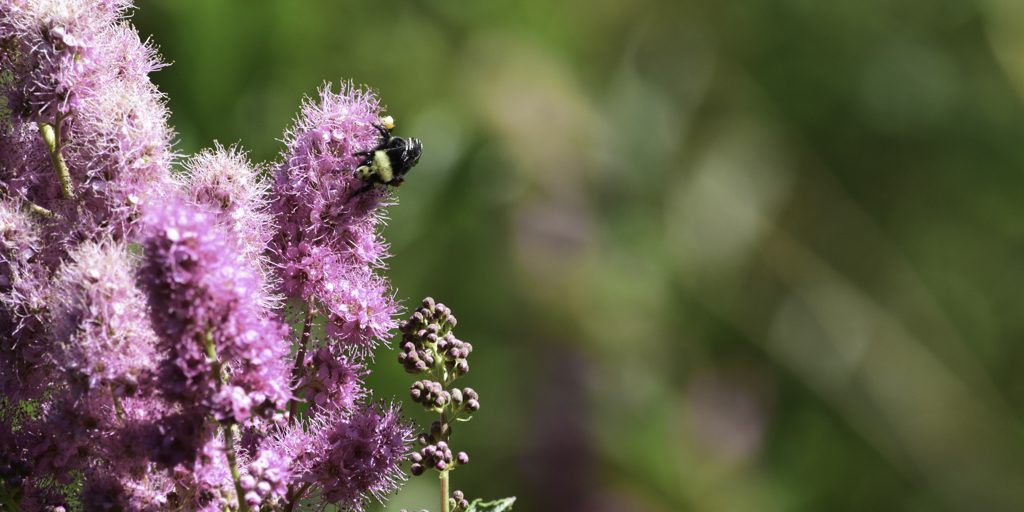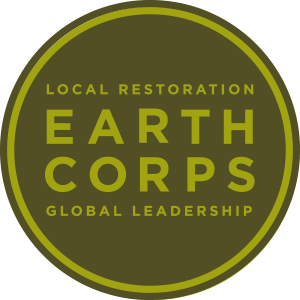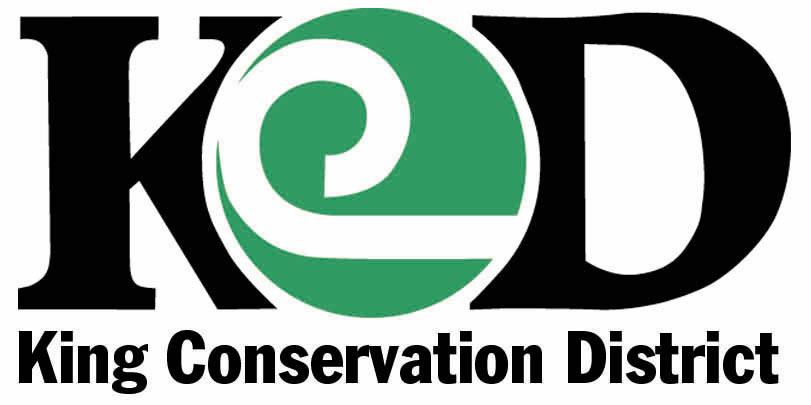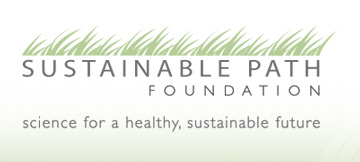The Buzz on Pollinators
EarthCorps is leading the charge on restoring habitat for native pollinators around Puget Sound.
Why Native Pollinators?
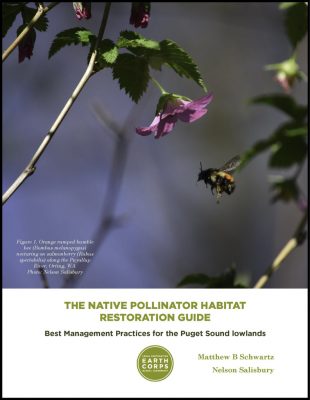
Click image for the new Native Pollinator Habitat Restoration Guide
Hummingbirds, bees, butterflies, moths, flies, wasps, and beetles are examples of native Pacific Northwest pollinators. They rely on the flowers of native plants, allured by the sugary nectar and protein rich pollen. As they visit each flower they transport pollen between flowers. This enables these plants to reproduce.
Unfortunately, many areas with the plants that pollinators need for survival are rapidly disappearing and being degraded. Many species of local pollinators are threatened and at risk of extinction.
EarthCorps at Work
EarthCorps crews, volunteers, and Sound Stewards are hard at work on the ground. They work in many types of ecosystems to build flourishing landscapes for native pollinators to thrive.
Project Highlight: At the Burke Gilman trail Pollinator Corridor, EarthCorps crews are converting 20,000 sq ft of turf grass into a diverse and thriving community of pollinator-friendly native plants.
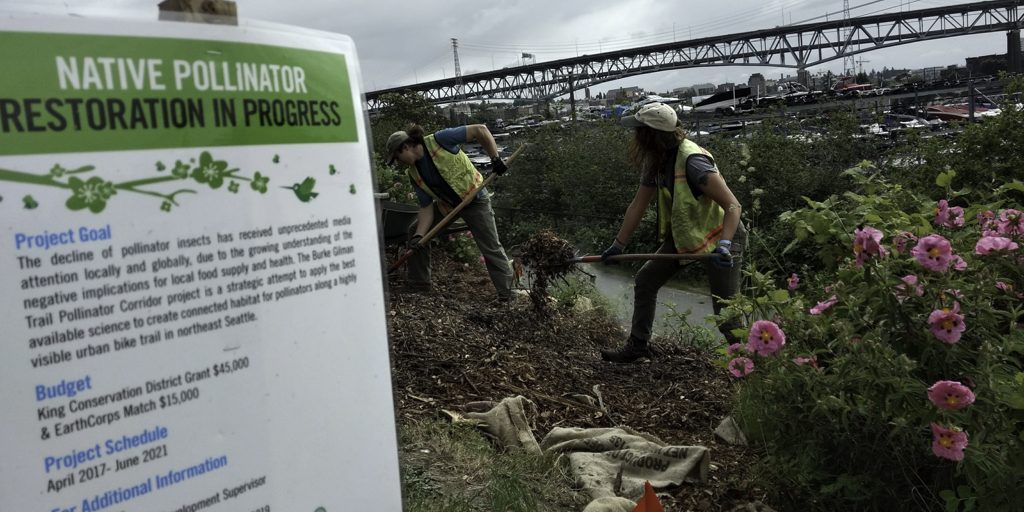
EarthCorps project managers create restoration designs and develop pollinator habitat projects for partners and clients around the Puget Sound region.
Project Highlight: At King County’s Brightwater Education Center, EarthCorps project managers designed a demonstration rain garden based around native pollinator-friendly plants and wildlife habitat features.
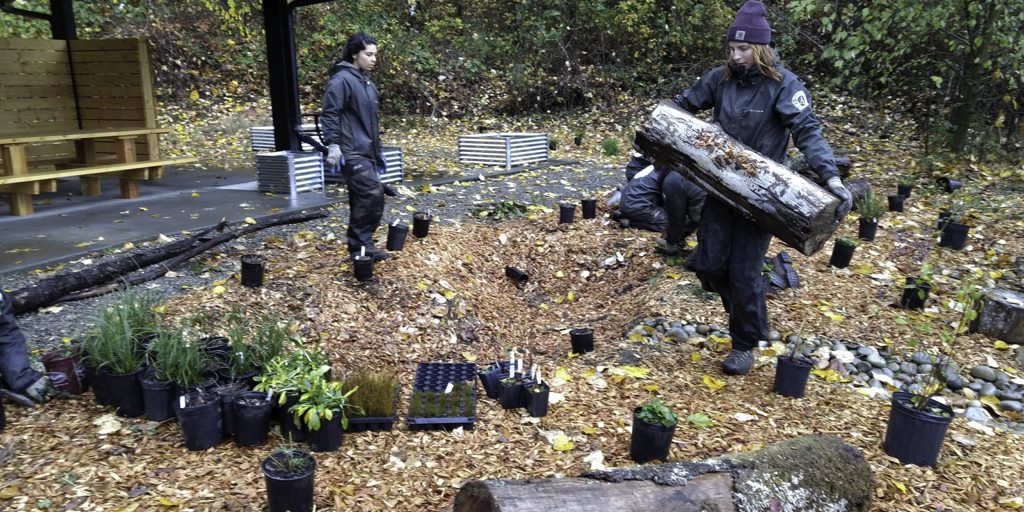
EarthCorps ecologists develop best management practices and monitor the results of our projects on the ground.
Project Highlight: The Native Pollinator Habitat Restoration Guide is a how-to practitioner guide for native pollinator habitat restoration in the Puget Sound region. It is geared towards planners, land managers, restoration practitioners, farmers, gardeners, orchardists, teachers, students, and homeowners. It may be used as an educational tool for elected officials, or as a technical resource for citation in official documents.
